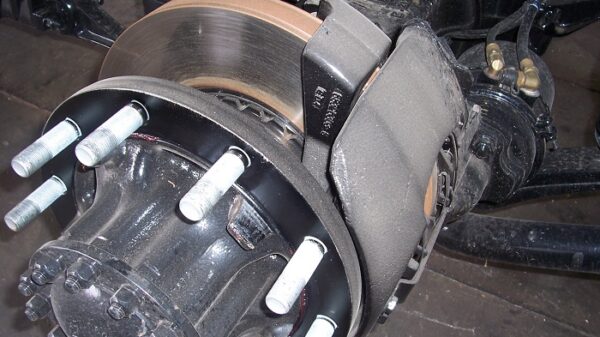Road markings are a vital component of transport infrastructure.
Road lining service, often referred to as road markings, are a critical component of transportation infrastructure. These markings guide vehicles, pedestrians, and cyclists, ensuring safety and order on roads, highways, and parking areas. While often overlooked, road linings are essential for maintaining efficient traffic flow and reducing accidents.
This article explores the significance of road linings, the processes involved in their application, and the benefits they bring to public and private spaces alike.
What Are Road Linings?
Road linings are visual markings applied to paved surfaces using durable materials such as thermoplastic, paint, or cold plastic. These markings can take various forms, including lines, arrows, symbols, and text, and serve a wide range of purposes.
They are used in numerous settings, from highways and local streets to car parks, industrial sites, and pedestrian zones. Their primary function is to communicate essential information to road users, ensuring compliance with traffic laws and fostering safe navigation.
Key Functions of Road Linings
1. Traffic Regulation
Road linings provide clear guidance on lane usage, turning movements, and speed restrictions. By marking boundaries and directions, they help maintain order, particularly in high-traffic areas.
2. Enhancing Safety
By clearly defining lanes, crossings, and stop points, road linings reduce confusion and minimise the risk of collisions. This is especially important at intersections, roundabouts, and pedestrian-heavy zones.
3. Supporting Accessibility
Road linings play a vital role in creating accessible environments. For example, markings for disabled parking spaces, cycle lanes, and pedestrian crossings ensure inclusivity and convenience for all users.
4. Improving Efficiency
Efficient road layouts depend on clear markings. Road linings optimise traffic flow, reduce congestion, and enable smoother navigation through complex areas like parking facilities or multi-lane highways.
5. Communicating Hazards
Markings such as “slow” zones, stop lines, and hazard warnings alert road users to potential dangers, helping prevent accidents and improving awareness.
Types of Road Linings
1. Longitudinal Markings
These include continuous and dashed lines that define lanes, shoulders, and the centre of the road. They guide drivers and separate opposing traffic flows.
2. Transverse Markings
Transverse lines are used at intersections and pedestrian crossings, such as stop lines and give-way markings, to control vehicle movement and prioritise pedestrians.
3. Directional Arrows and Symbols
Arrows and symbols, such as turn indicators or lane-use instructions, help road users make informed decisions, especially in complex traffic scenarios.
4. Parking and Loading Bay Markings
These markings organise parking areas and designate specific zones for loading, ensuring efficient use of space and compliance with local regulations.
5. Hazard Markings
Chevrons, hatching, and other hazard indicators highlight potential dangers, such as sharp curves, merging lanes, or construction zones.
The Road Lining Process
Step 1: Site Assessment
Before applying road linings, professionals evaluate the site to determine the appropriate markings based on traffic flow, usage patterns, and safety requirements.
Step 2: Surface Preparation
The area is cleaned to remove debris, oil, and loose particles, ensuring the markings adhere properly. In some cases, old markings may need to be removed.
Step 3: Material Selection
The choice of material—thermoplastic, paint, or cold plastic—depends on factors such as durability, visibility, and environmental conditions.
Step 4: Marking Application
Specialised equipment is used to apply the markings with precision. This may include hand-operated machines for small areas or larger machinery for extensive projects.
Step 5: Curing and Inspection
Once applied, the markings are left to cure, after which they are inspected for accuracy, adherence, and visibility.
Materials Used in Road Linings
1. Thermoplastic
Thermoplastic is a durable, high-visibility material commonly used for road linings. It is heated and applied in molten form, solidifying as it cools.
2. Paint
Paint is a cost-effective option for less demanding environments, such as residential areas or private car parks. While not as long-lasting as thermoplastic, it remains a practical choice for temporary or low-traffic markings.
3. Cold Plastic
Cold plastic is a hard-wearing material suitable for high-traffic areas. It is applied without heating and offers excellent durability and resistance to wear.
4. Reflective Additives
For enhanced visibility at night or in poor weather conditions, reflective beads are often added to road lining materials.
Why Are Road Linings Important?
1. Safety Enhancement
Clear, visible markings guide road users, reducing confusion and the likelihood of accidents. This is particularly important in areas with complex layouts or limited visibility.
2. Compliance with Regulations
Road linings ensure that roads and parking areas comply with local and national traffic laws, helping avoid fines or penalties.
3. Cost-Effective Maintenance
Well-maintained road linings can extend the life of infrastructure by preventing misuse and damage. They are a cost-effective way to manage traffic and reduce wear on surfaces.
4. Improved Aesthetics
Fresh, well-defined markings enhance the visual appeal of roads and parking facilities, creating a professional and organised appearance.
5. Support for Smart Cities
In an era of smart city development, road linings are essential for integrating technology such as autonomous vehicles, which rely on clear markings for navigation.
Signs Your Road Linings Need Updating
Faded or peeling markings.
Reduced visibility, especially at night or in wet conditions.
Changes in traffic flow or regulations.
Development of new hazards or road layouts.
Conclusion
Road linings are a cornerstone of safe and efficient transport systems, offering guidance, organisation, and hazard awareness to all road users. Whether on busy highways or in private car parks, these markings are essential for maintaining order and safety.
By understanding the purpose and process of road linings, property owners, councils, and developers can ensure their spaces meet high standards of usability and compliance. Regular updates and maintenance of these markings are key to keeping roads safe and functional for everyone.







